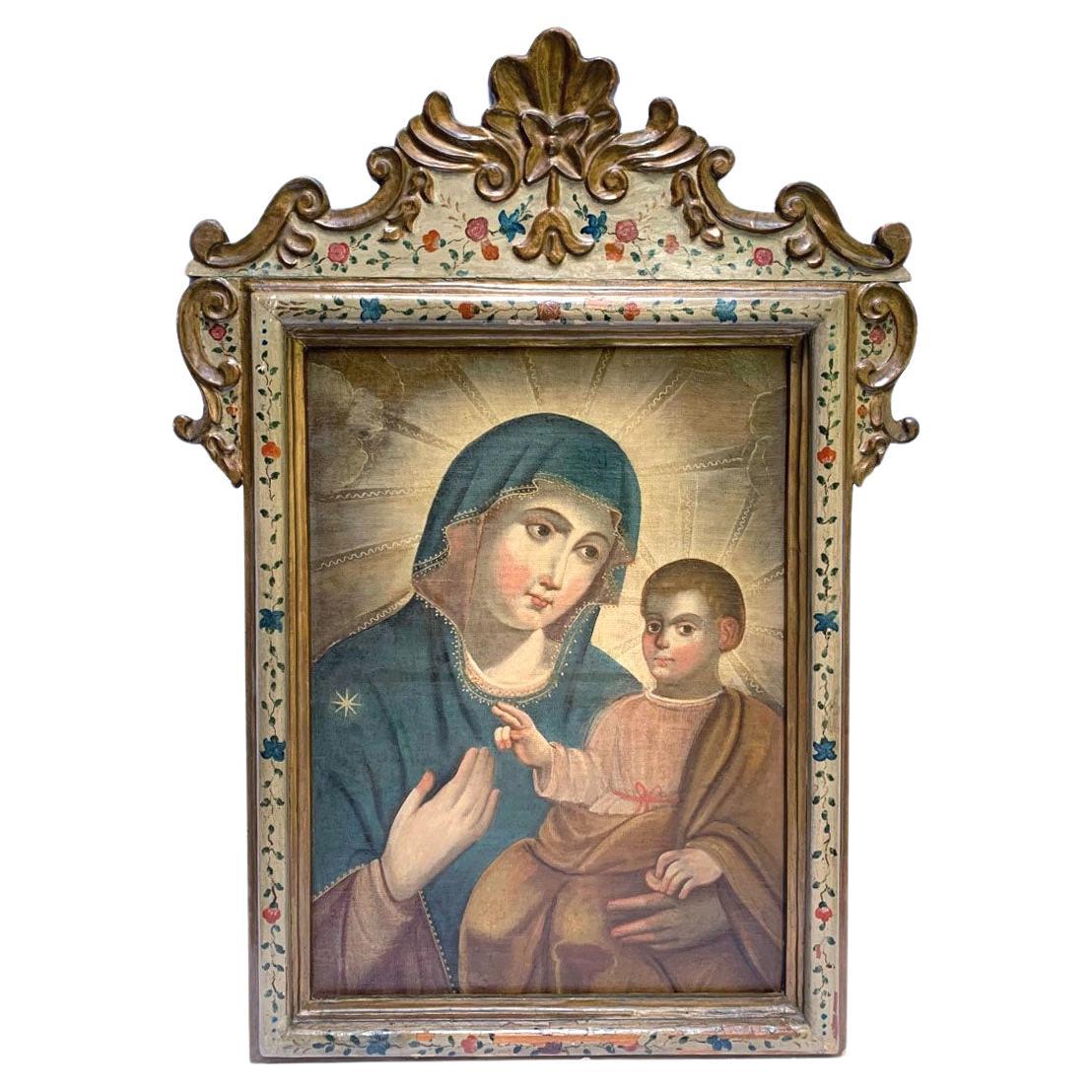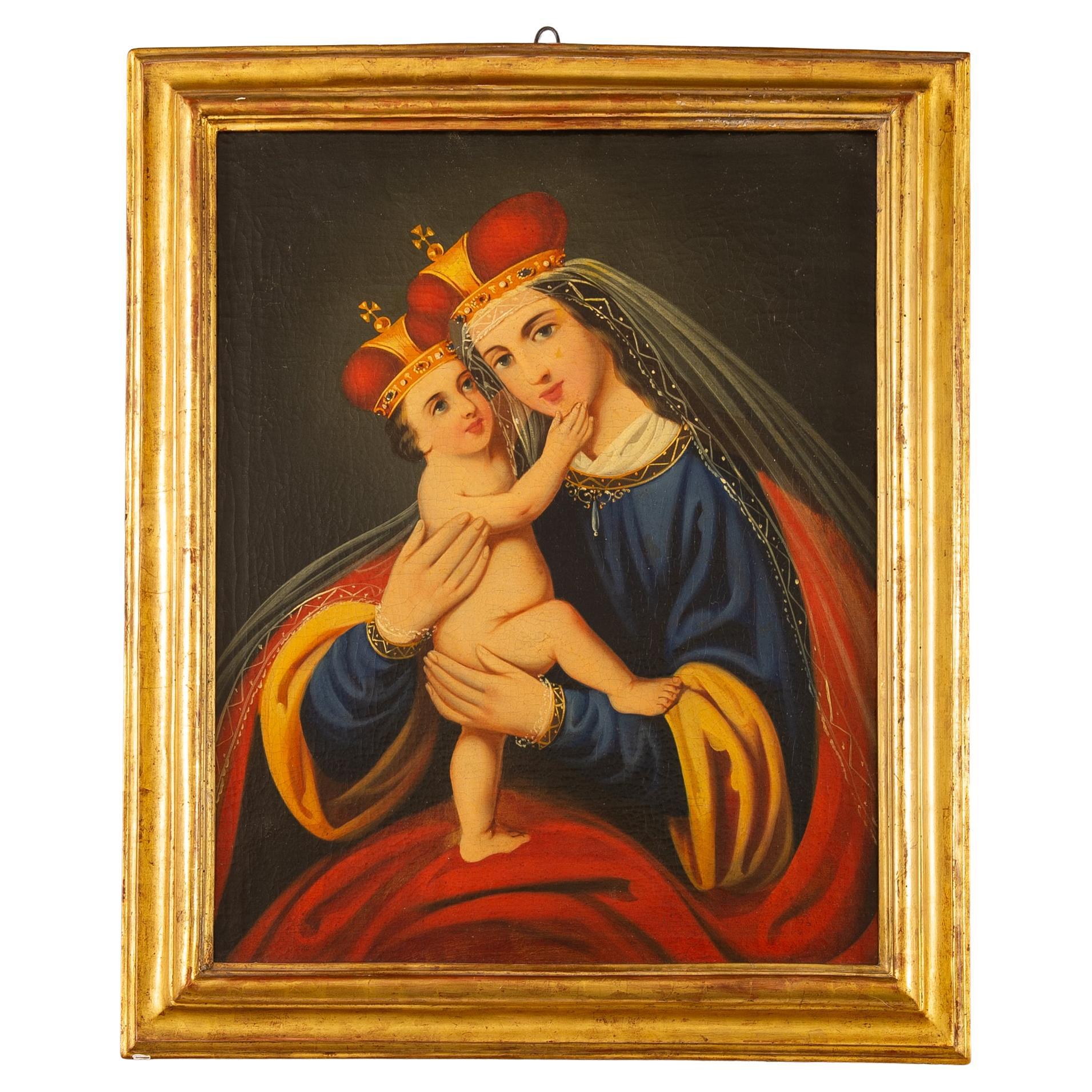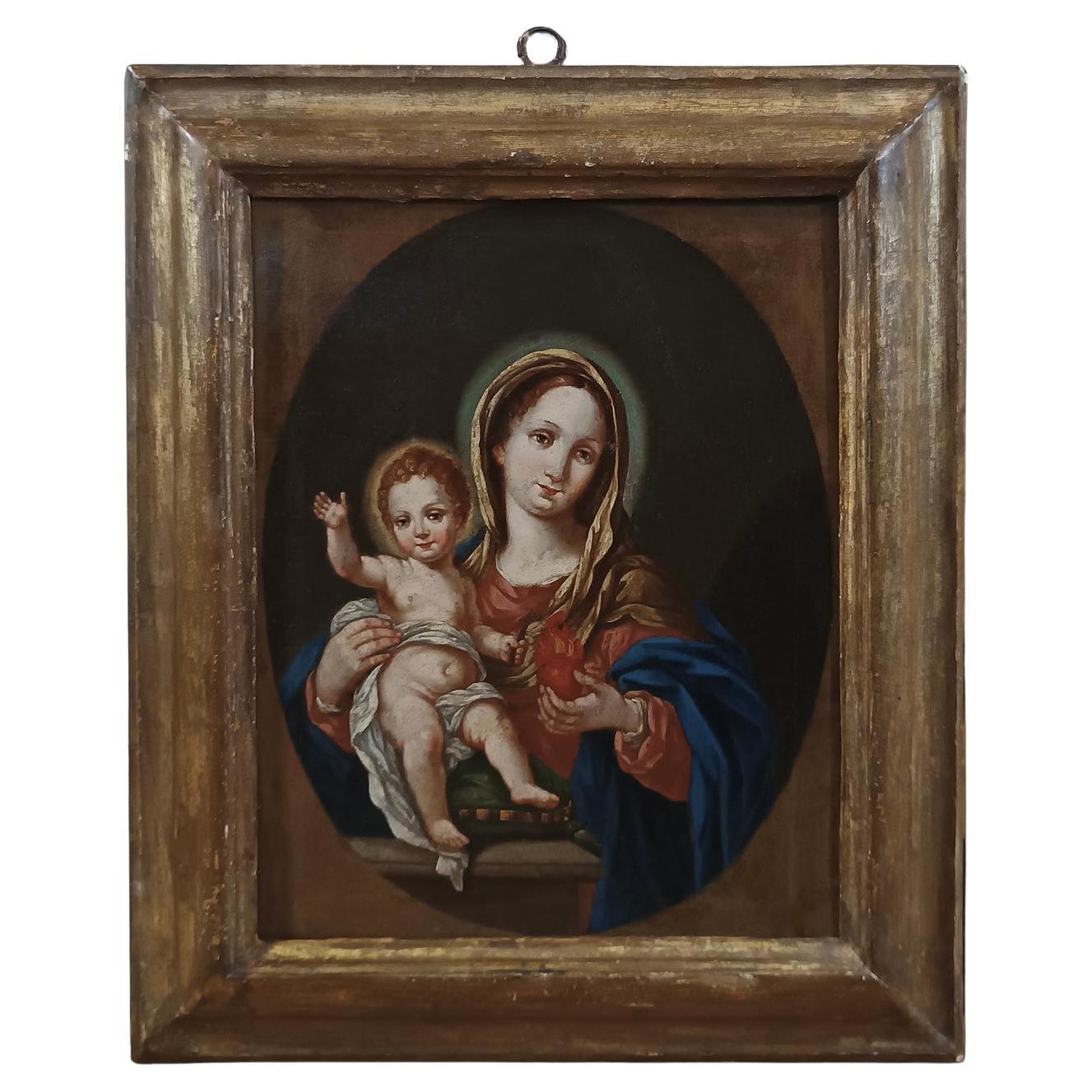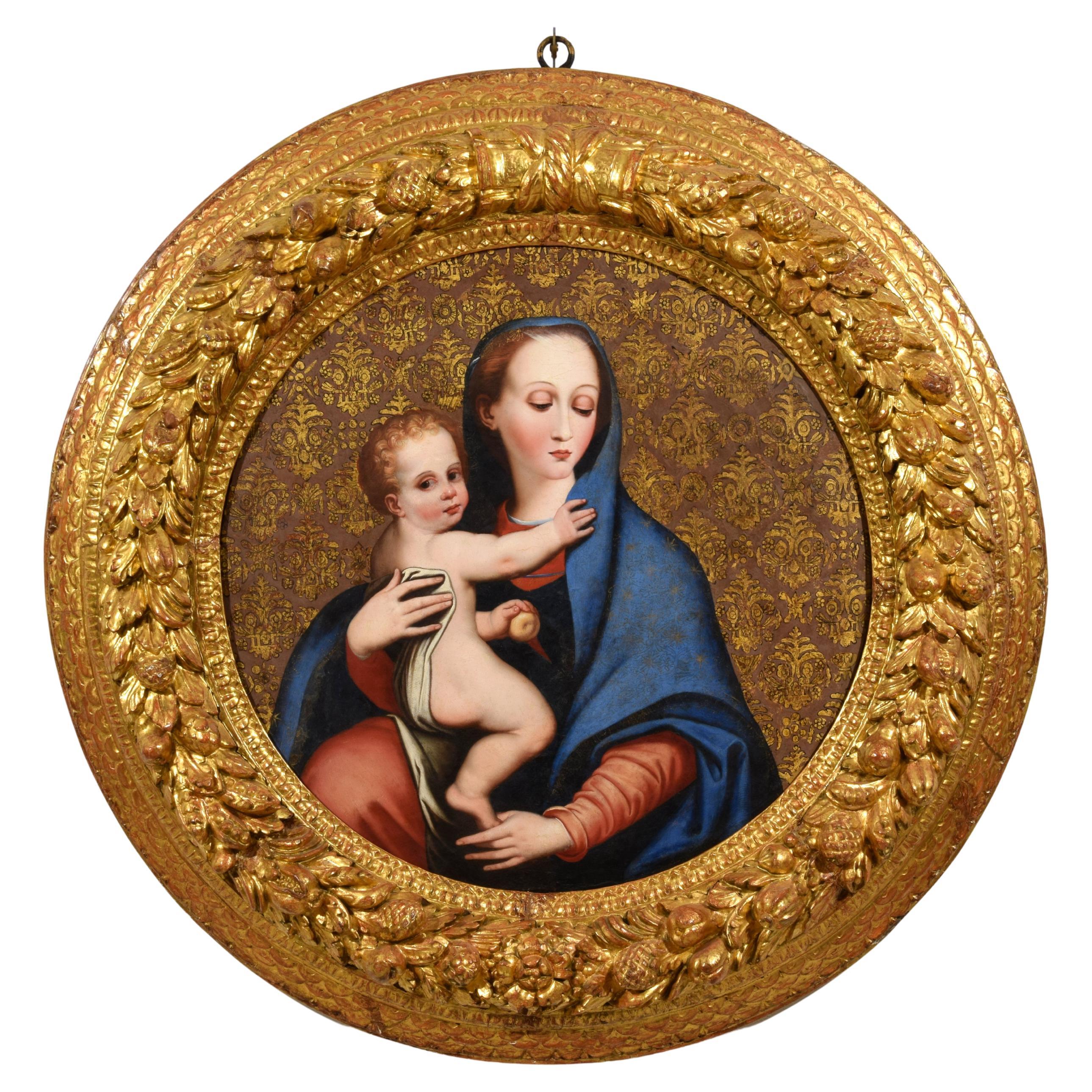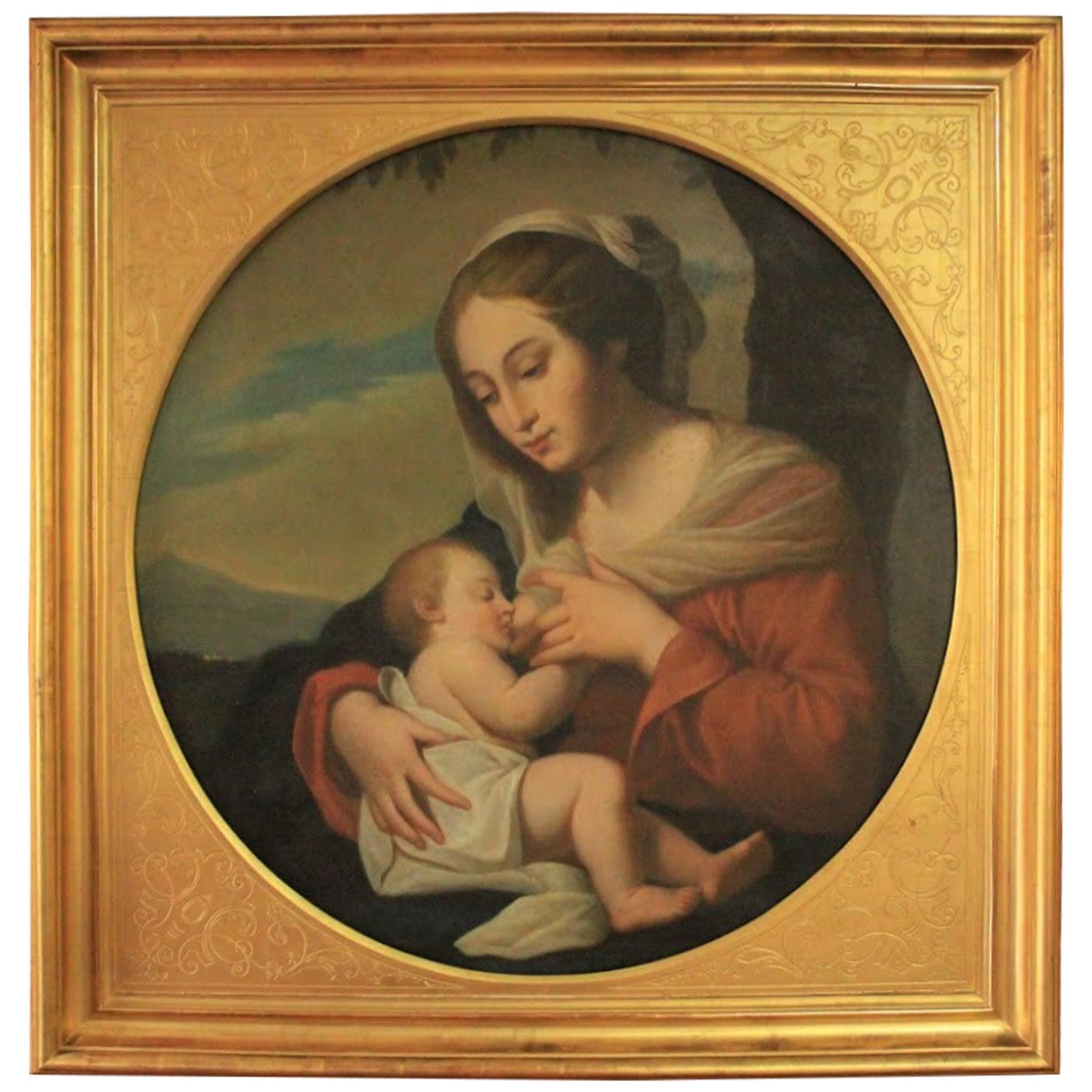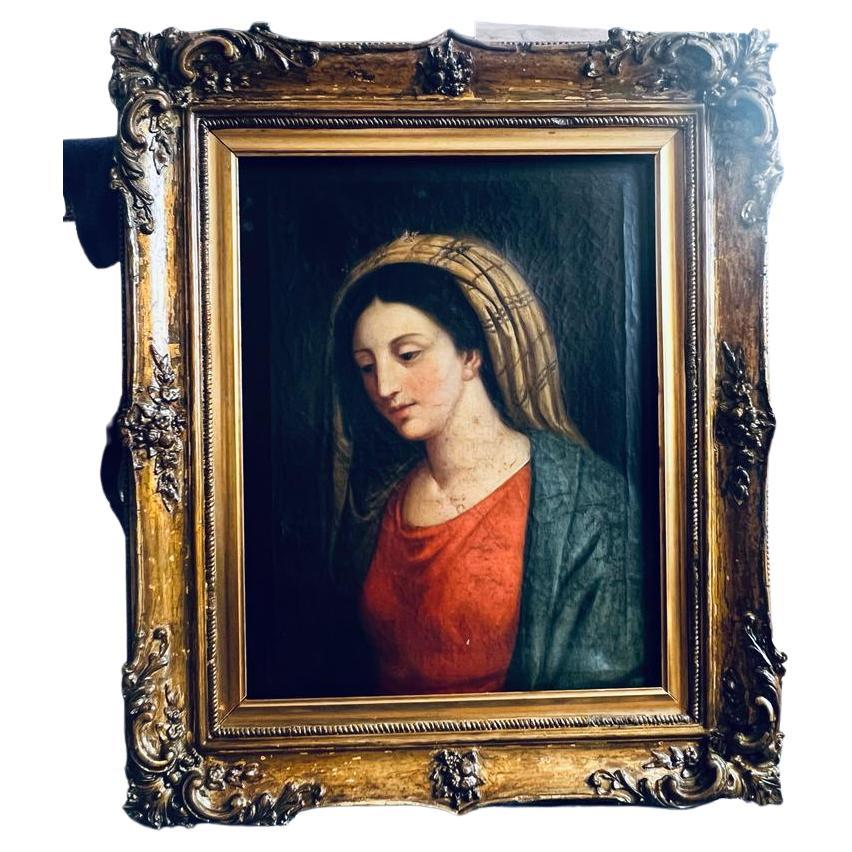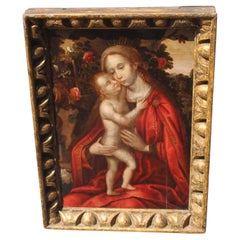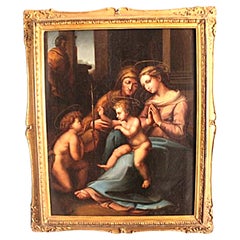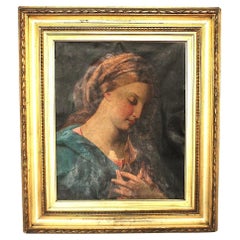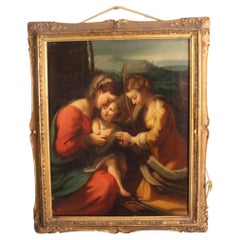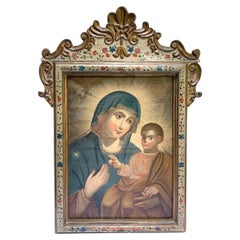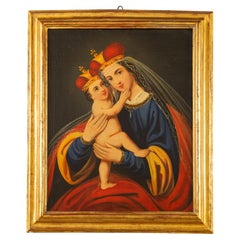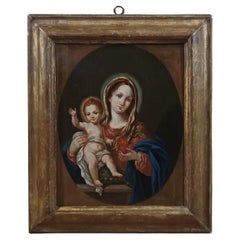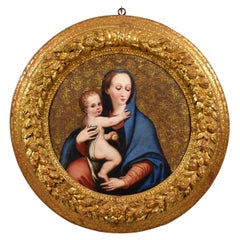Items Similar to 19th century After Rahael Grand Duke’s Madonna Painting
Want more images or videos?
Request additional images or videos from the seller
1 of 14
19th century After Rahael Grand Duke’s Madonna Painting
$1,808.96
$2,261.1920% Off
£1,320
£1,65020% Off
€1,539.99
€1,924.9920% Off
CA$2,477.82
CA$3,097.2720% Off
A$2,755.87
A$3,444.8420% Off
CHF 1,439.03
CHF 1,798.7920% Off
MX$33,536.04
MX$41,920.0520% Off
NOK 18,378.62
NOK 22,973.2820% Off
SEK 17,235.91
SEK 21,544.8820% Off
DKK 11,493.57
DKK 14,366.9620% Off
Shipping
Retrieving quote...The 1stDibs Promise:
Authenticity Guarantee,
Money-Back Guarantee,
24-Hour Cancellation
About the Item
After Raphael's Grand Duke's Madonna
Grand Duke's Madonna after Raphael, a stunning 19th-century oil painting from the renowned Berkley Collection. This remarkable artwork, inspired by the brilliance of the Renaissance master Raphael, exemplifies the enduring allure of classical art. Painted in the Italian School tradition, this rare piece showcases a unique and captivating technique—oil on paper laid to the board—that sets it apart from other works.
Furthermore, the painting’s elegance is amplified by its hand-carved grapevine frame, which has been carefully restored to preserve its intricate details and timeless charm. Whether displayed in a home or office, the Grand Duke’s Madonna after Raphael makes a striking statement piece, effortlessly drawing the admiration of all who view it.
Provenance: Grand Duke's Madonna after Raphael
Origin: Spetchey Park, Worcestershire
History: Acquired by Robert and Rose Berkley during their grand tour travels to Italy in the 1890s, this artwork holds significant historical value.
Significance: Additionally, an archivist from Berkley Castle suggests that the painting may have once adorned a bedroom in Spetchey Park, further enhancing its story and charm.
Technique
Medium: Rare and unusual oil on paper laid to board.
Details: This distinctive medium gives the artwork a vibrant texture, making it an exceptional example of 19th-century craftsmanship.
Condition: Grand Duke's Madonna after Raphael
Restoration: The painting has been professionally cleaned, while the intricate grapevine frame has undergone meticulous restoration to revive its original beauty.
Notes: Although a few minor pieces are missing from the frame, and the paper shows slight creases, these characteristics only add to its authenticity and historical appeal.
- Similar to:(after) Raphael (Raffaello Sanzio da Urbino) (Artist)
- Dimensions:Height: 25.2 in (64 cm)Width: 21.26 in (54 cm)Depth: 1.19 in (3 cm)
- Style:Renaissance (In the Style Of)
- Materials and Techniques:
- Place of Origin:
- Period:
- Date of Manufacture:1890
- Condition:Refinished. Wear consistent with age and use. Minor losses. The painting has been cleaned. Few creases to the paper. A few pieces on the grapevine frame are missing.
- Seller Location:Seaford, GB
- Reference Number:1stDibs: LU10376244469392
About the Seller
New to 1stDibs
Joined in the past six months.
No Reviews Yet
Vetted Professional Seller
Every seller passes strict standards for authenticity and reliability
Established in 2021
1stDibs seller since 2025
Typical response time: 1 hour
- ShippingRetrieving quote...Shipping from: Seaford, United Kingdom
- Return Policy
Authenticity Guarantee
In the unlikely event there’s an issue with an item’s authenticity, contact us within 1 year for a full refund. DetailsMoney-Back Guarantee
If your item is not as described, is damaged in transit, or does not arrive, contact us within 7 days for a full refund. Details24-Hour Cancellation
You have a 24-hour grace period in which to reconsider your purchase, with no questions asked.Vetted Professional Sellers
Our world-class sellers must adhere to strict standards for service and quality, maintaining the integrity of our listings.Price-Match Guarantee
If you find that a seller listed the same item for a lower price elsewhere, we’ll match it.Trusted Global Delivery
Our best-in-class carrier network provides specialized shipping options worldwide, including custom delivery.More From This Seller
View AllFlemish 16th century Madonna in a Rose Garden
Located in Seaford, GB
The Madonna and Child Oil Painting in a Rose Garden – Flemish (Ambrosius Benson School)
Late 16th Century/ Early 17th Century Flemish Oil Painting on Oak Panel
Artist & Background
This exquisite Flemish Renaissance Madonna and Child oil painting, titled Madonna and Child in a Rose Garden, is attributed to a follower of Ambrosius Benson (circa late 16th - early 17th century). Benson, originally from Lombardy, Italy, became a renowned master painter in Bruges, Flanders, in the early 1500s..
Key Features of This Madonna and Child Painting:
Period & Style – Late 16th-century Flemish School, influenced by Gerard David and Leonardo da Vinci.
Medium – Oil on oak panel, a signature technique of Flemish masters.
Composition – The Virgin Mary and Christ Child are set in a serene rose garden, symbolising purity and divine love.
Influence – This artwork reflects both Netherlandish precision and Lombard artistic traditions.
Provenance & Demand: Benson’s followers were widely sought after, and his compositions commanded high market value among collectors.
Antique Hand-Carved Frame Old Master Madonna and Child Artwork
This painting is housed in an original 17th-century hand-carved wooden frame featuring a classic egg-and-dart motif.
Condition Report
Conservation Status: Professionally cleaned.
Historical Cracking: Some age-related panel cracks are common in antique oil paintings.
Restoration: Minor retouching to the Madonna’s face, enhancing original details.
Why Invest in Flemish Renaissance Art?
Historical Significance – Works by Ambrosius Benson’s followers remain highly collectable in the art market.
Museum-Quality Piece – Suitable for private collectors, investors, and art connoisseurs.
European Heritage – A fine example of an Old Master religious painting...
Category
Antique 1610s Belgian Renaissance Paintings
Materials
Oak, Paint
After Raphael The Madonna Of Divine Love oil on canvas
By (after) Raphael (Raffaello Sanzio da Urbino)
Located in Seaford, GB
Early 19th-Century Italian School Oil on Canvas – After Raphael
The Holy Family with Saint Elisabeth and the Infant Saint John the Baptist
Introduction: A Masterpiece Inspired by Rap...
Category
Antique Early 19th Century Italian Renaissance Paintings
Materials
Canvas
Studio of Pompeo Batoni, “Madonna of the Annunciation– Mid-18th Century Italian
Located in Seaford, GB
Country HouseAn exceptional mid-18th-century oil painting from the Studio of Pompeo Batoni (1708–1787), presenting a revered composition: The Madonna of the Annunciation. This rema...
Category
Antique Mid-17th Century Italian Grand Tour Paintings
Materials
Canvas
18th century Antonio Correggio The Mystic Marriage of St Catherine
By Antonio da Correggio
Located in Seaford, GB
Antonio Correggio’s The Mystic Marriage of St. Catherine
This stunning 18th-century copy draws inspiration from the masterpiece The Mystic Marriage of Saint Catherine, originally pa...
Category
Antique Mid-19th Century Italian Renaissance Paintings
Materials
Canvas
$2,411 Sale Price
20% Off
17th Century Italian Crucifixion Painting – Oil on Panel, Baroque Devotional Art
Located in Seaford, GB
17th Century Italian School Crucifixion Oil on Panel
This exquisite 17th-century Italian School Crucifixion oil painting is a masterpiece of...
Category
Antique 17th Century Italian Baroque Paintings
Materials
Oak, Paint
$5,097 Sale Price
20% Off
Exquisite 19th Century English Still Life of wild flowers– Oil on Wood Panel
Located in Seaford, GB
A captivating and finely executed 19th-century English still life painting, rendered in oil on wood panel, depicting an abundant bouquet of mixed flowers in a terracotta urn. This hi...
Category
Antique 19th Century English High Victorian Paintings
Materials
Paint
You May Also Like
Magnificent 18th Century Venetian Madonna
Located in Rio De Janeiro, BR
Great oil on canvas depicting Madonna and Child. Carved, gilded and polychrome wooden frame with floral arrangements. Venetian, 18th Century.
Dimensions in centimeters: CANVAS 69cm H x 51cm / FRAME 107cm H x 80cm.
In art, a Madonna is a representation of Mary, either alone or with her child Jesus. These images are central icons for both the Catholic and Orthodox churches. The word is from Italian ma donna 'my lady' (archaic). The Madonna and Child type is very prevalent in Christian iconography, divided into many traditional subtypes especially in Eastern Orthodox iconography, often known after the location of a notable icon of the type, such as the Theotokos of Vladimir...
Category
Antique Mid-18th Century Italian Baroque Paintings
Materials
Canvas
"Madonna with Child" Antique Painting
Located in Alessandria, Piemonte
This painting comes from Polland and is over 200 years old. Oil on canvas with little restorations.: let's not forget that there were two world wars in Europe.
A lovely Madonna and c...
Category
Antique Mid-18th Century Polish Other Paintings
Materials
Canvas
MID-18th CENTURY PAINTING MADONNA WITH CHILD
Located in Firenze, FI
Beautiful oil painting on canvas, made on the first canvas and framed with a contemporary rectangular frame in carved and gilded wood. The painting represents a striking image of the...
Category
Antique Mid-18th Century Italian Paintings
Materials
Canvas, Wood, Paint
17th Century, Italian Oil on Panel Painting Depicting Madonna della Purità
Located in IT
17th Century, Italian Oil on Panel Painting Depicting Madonna della Purità
The painting, executed in oil on a circular wooden panel and presented in an imposing carved and gilded wo...
Category
Antique 17th Century Italian Renaissance Paintings
Materials
Wood, Giltwood
Italian School Painting of Madonna and Child
Located in Woodbury, CT
19th century Italian School oil on canvas of Madonna and child. Gilt frame.
Category
Antique 19th Century Italian Renaissance Revival Paintings
Materials
Canvas
Antique 17th Century Painting Madonna /Virgin Mary Italy Oil on Canvas
Located in Doha, QA
Magnificent Italian 17th century Portrait of Virgin Mary measures 52 x 68 cm without the frame.
The colors are stunning and the paintin...
Category
Antique 17th Century Italian Baroque Paintings
Materials
Canvas
More Ways To Browse
Grapevine Oil Painting
Antique Yard Long
Brass Music Box
Bronze Foo Lions
Byobu Gold Leaf
Camphor Table
Car Radiators
Caste Furniture
Catalan Spanish Baroque
Ceramic And Fiber Wall Sculpture
Chevron Wood Cabinet
Chinese Export Silver Tea Set
Chinese Lattice Panel
Chinese Pottery Statue
Coffee Pot Enamel
Commode Desk Antique
Cork Top Dining Table
Crystal Bowl And Pedestal
